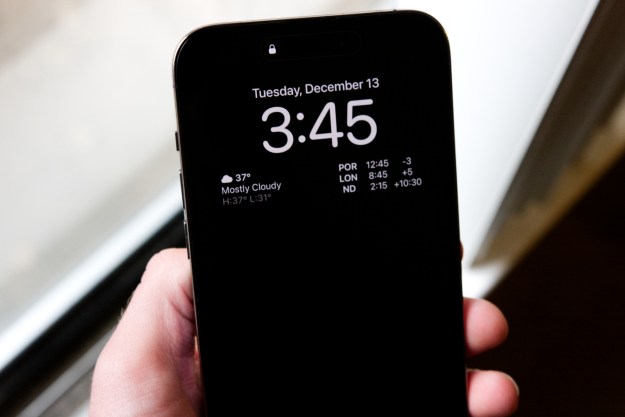
The United States’ patent system — and, indeed, patent systems around the world — have been sharply criticized for years, particularly in the software arena. Patents are intended to give inventors exclusive rights to technology they develop, in exchange for public disclosure. With a patent, inventors can prevent anyone from selling, manufacturing, distributing, or using their invention without permission, yet the broader industry benefits from knowledge of the technology and, potentially, the ability to license it from the inventor. Although terms vary around the world, patent exclusivity usually lasts at least 20 years. That’s less than a copyright, but long enough for inventors to realize significant commercial gains from their innovations.
Right now, patents are a very hot topic in mobile technology. Major companies like Apple, Microsoft, Samsung, Google, Oracle, HTC, Kodak, RIM, and many more — as well as non-practicing entities (a.k.a. patent trolls) — are at each other’s throats in patent infringement cases. What’s more, the companies are scrambling to acquire still more patents to solidify their negotiating positions. Ten or hundreds of billions of dollars — and potentially the future of many mobile platforms — hang in the balance.
Google has famously claimed “bogus” patents are being used to attack its Android operating system. Now, in an interview with the San Francisco Chronicle (here and here) Microsoft’s deputy counsel for intellectual property Horatio Gutiérrez argues assertions of those same patent claims are actually proof the system is working.
Is either company right, and can anything be done to prevent abuses of the patent system?
 Microsoft’s stance
Microsoft’s stance
Microsoft has made no bones about pursuing patent licensing deals with device makers building Android equipment. The company recently inked its tenth Android licensing deal and has sued Barnes & Noble claiming its Android devices violate Microsoft patents. The net result? Microsoft is earning money from sales of a growing pool of Android devices, including devices from the likes of HTC, and told the Chronicle. “In doing that, they have really stood on the shoulder of companies like Microsoft who made all these billions of dollars in investments.”
Microsoft argues many of those features are critical to these device’s operating systems and functionality—such as the ability to synchronize content with cloud-based systems, business services, and home computers. However, Gutiérrez also notes that seemingly innocuous things add up: one patent at issue in Microsoft’s suit against Barnes & Noble involves graphics that appear during Web page loads. While such a feature might seem minor or unworthy of patent protection, Gutiérrez argues they’re an important part of a device’s experience. “Those patents [cover] individual features that have been created in a particularly inventive way by Microsoft.”
Gutiérrez fully acknowledges that patents cover methods for achieving things, not the final outcome of the innovation or even the idea itself. Gutiérrez also openly notes that different inventors can come up with different ways of achieving the same goal, and each method could be independently patentable. In other words, Microsoft isn’t claiming its patents cover all methods of synchronizing mobile devices with servers, computers, or services: just particular ones. In its opinion, several of those methods are included in Android.
“Licensing is not some nefarious thing that people should be worried about,” Gutiérrez said. “Licensing is, in fact, the solution to the patent problem that people are reacting so negatively about.”
 Google’s stance
Google’s stance
Not surprisingly, Google sees Microsoft’s position differently. “Patents were meant to encourage innovation, but lately they are being used as a weapon to stop it,” wrote Google’s’s chief legal officer David Drummond in an now-infamous screed this August. Drummond accused companies like Oracle, Apple, and Microsoft of attacking Android using both their own patents along with those acquired through purchases in an effort to curtail Android’s market momentum, raise the ultimate cost of Android devices for consumers — or, at the very least, participate in Android’s growing revenue stream. “Instead of competing by building new features or devices, they are fighting through litigation,” Drummond wrote.
Drummond acknowledges that a smartphone might involve as many as a quarter million patent claims, and asserts the majority are “questionable.” Curiously, Drummond never says Android doesn’t violate patents, but he does imply any patent violations are inconsequential or related to “bogus,” “old,” or “questionable” patents that ought not to have any bearing on Android and Google’s efforts to innovate.
Software patents
It’s worth noting that neither Microsoft nor Google had much of a hand in crafting the patent system as it exists today. To a large degree, both companies are just playing by the rules set down for them. Microsoft characterizes patent licensing as the “solution” to patent disputes in the technology world. It has a point: The only other solutions are outright sales of patents or the courtroom. And as much as Google may decry the current patent system as stifling innovation, it plays the patent game with as much gusto as anybody else: Recently Google transferred patents to HTC to better arm the company against the infringement lawsuit it faces from Apple.
Most of the existing patent system was conceived and legislated before the computer revolution — and certainly before the mobile revolution. Many have argued that the system simply does not function effectively for industries that move so quickly. Where the system might work for industrial and manufacturing processes (say smelting new steel alloys or a new resource-conserving design for watertight shipping containers), technology and particularly software innovations can be conceived, coded, distributed, made obsolete, and fade into dim history in the time it takes a genuine patent dispute to get resolved.
Many have argued that software patents are particularly problematic. The arguments are complex, but a few key points run through most:
- Software can be considered an idea, rather than a process. Although particular source code represents an unique implementation of a process, most programmers with experience in a field can create their own process that accomplishes the same goal.
- Efforts to protect software processes (by omitting or obscuring an inventor’s “best mode” for their process) leads to many software patents being incredibly inscrutable, undermining the value of their public disclosure.
- The length and cost of the patent process itself keeps many small developers from participating at all. Even if a programmer comes up with a patentable process, the lower costs of distribution and marketing in the software arena — not to mention the speed of the industry — means he or she doesn’t have the time or resources to pursue patents. Thus, programmers might be better served by copyright protections such as those available to musicians, authors, writers, and filmmakers.
Of course, the counter-argument is that without patent protection, there’s no reason for companies like Microsoft — or Apple or Oracle or Google — to invest billions in innovating software. The promise of patent exclusivity provides an economic incentive for companies to invest significant time and resources in innovations and improvements. One could argue it also provides an opportunity for small companies and even solo developers to receive compensation for their work.
Not all patents at issue in the mobile world are pure software patents. For instance, Apple’s mammoth U.S. patent 7,479,949 — widely considered to be at the heart of its case against Android — comes in at over 350 pages and deeply describes the iPhone’s multi-touch interface, from the way fingers touch the screen, to how the hardware handles it, and the software heuristics that convert gestured into commands.
 Recent reforms
Recent reforms
Last month, President Obama signed the America Invents Act, which introduces changes to the U.S. patent systems. It’s widely regarded as the most significant revision to the patent system since the dawn of the computer age.
Among the changes implemented by the America Invents Act are a conversion from a “first to invent” system to a “first to file” system beginning in early 2013: That is, the person who first comes up with a patentable process isn’t necessarily eligible for patent protection unless they are also the first to file for a patent on the method. (There is a grace period and infringement defense for other inventors who use a method commercially prior to a filing.) The change brings the U.S. system into line with other patent systems around the world. The practice will eliminate so-called “interference proceedings” that sometimes had to be held to determine which of multiple applicants actually first came up with a particular process. As of 2013, those will all be resolved by filing dates alone. The first-to-file method has been criticized as favoring large companies that can afford to file swathes of patent applications; the grace period is primarily designed to protect smaller companies and individuals. The act also includes patent fee reductions for “micro-entities” like individual inventors and startups, designed to lower barriers of entry into the patent process.
However, the America Invents Act does little to settle questions surround the validity and granting of software patents, and while it does redefine the nature of “prior art” surrounding the validity of a patent application, it does little to nothing to change other shortcomings of the U.S. patent system. Patent battles in the technology world will still likely outlast the technology itself. Non-practicing entities will still build businesses solely around collecting, licensing, and suing over patents. And patents will still be stacked up and swapped as chits in ever-more-complex chess games as companies try to strengthen their positions in negotiations and courtroom fights.
Editors' Recommendations
- How to reverse image search on Android or iPhone
- How to find downloaded files on an iPhone or Android phone
- Google is killing your passwords, and security experts are (mostly) happy
- Android does this one thing so much better than iOS, and it drives me crazy
- The Pixel 7’s best camera trick is coming to the iPhone and all Android phones



